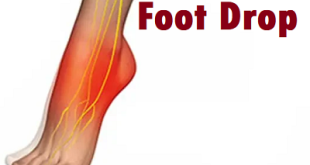What is Meralgia Paresthetica?
Meralgia paresthetica is a condition that causes numbness, pain, or a burning feeling in your outer thigh. You might also hear it called Bernhardt-Roth syndrome. It happens when there’s too much pressure on or damage to one of the nerves in your leg, specifically the lateral femoral cutaneous nerve (LFCN).
In most cases, there are simple ways to treat the condition, such as wearing looser clothing. Some people with more severe meralgia paresthetica may need medication or surgery.
With the right treatment and enough time to recover, you can ease your symptoms and feel better.
Pathophysiology
Reviewing the anatomy of the LFCN is essential for understanding the mechanism of its injury (see the images below). The LFCN originates directly from the lumbar plexus and has root innervation from L2-3.
The nerve runs through the pelvis along the lateral border of the psoas muscle to the lateral part of the inguinal ligament. Here, it passes to the thigh through a tunnel formed by the lateral attachment of the inguinal ligament and the anterior superior iliac spine. The crossover into the thigh is the most common site of entrapment. The crossover typically occurs 1 cm medial to the anterior superior iliac spine; however, regional variations are common.
Causes
Meralgia paresthetica occurs when the lateral femoral cutaneous nerve — which supplies sensation to the surface of your outer thigh — is pinched (compressed). The lateral femoral cutaneous nerve only affects sensation and doesn’t affect your ability to use your leg muscles.
In most people, this nerve passes through the groin to the upper thigh without trouble. But in meralgia paresthetica, the lateral femoral cutaneous nerve becomes trapped — often under the inguinal ligament, which runs along your groin from your abdomen to your upper thigh.
Common causes of this compression include any condition that increases pressure on the groin, including:
- Tight clothing, such as belts, corsets and tight pants
- Obesity or weight gain
- Wearing a heavy tool belt
- Pregnancy
- Fluid accumulation in the abdomen causing increased abdominal pressure
- Scar tissue near the inguinal ligament due to injury or past surgery
Nerve injury, which can be due to diabetes, trauma after surgery or seat belt injury after a motor vehicle accident, for example, also can cause meralgia paresthetica.
Who is predisposed to meralgia paresthetica?
Anyone can develop meralgia paresthetica. However, you are more likely to develop this condition if you:
- Have diabetes.
- Are exposed to lead paint.
- Are injured by your seatbelt during a car accident.
- Have overweight/obesity.
- Pregnant.
- Recovering from a recent surgery.
You are also more likely to develop meralgia paresthetica if you:
- Wear tight clothing, girdles, or tight stockings or wear a heavy utility belt (like a tool belt or police gun belt).
- Have legs of two different lengths.
- Live with medical conditions such as hypothyroidism or alcohol use disorder.
What are the symptoms of meralgia paresthetica?
Meralgia paresthetica affects the skin on the outer thigh. Symptoms most commonly occur on one side of the body. They may worsen after standing or walking for a long period of time.
Symptoms include:
- Pain
- Burning
- Tingling
- Partial loss of sensation
- Aching in the groin area
The skin on the outer thigh is usually more sensitive to light touch than to firm pressure. The muscles of the thigh aren’t affected.
What complications are associated with meralgia paresthetica?
Left untreated, meralgia paresthetica may cause:
- Increased pain
- Numbness
- Burning
These effects may interfere with your ability to walk or move normally.
How Meralgia Paresthetica diagnosed?
To diagnose meralgia paresthetica, a doctor will ask you questions about your symptoms and conduct a physical exam. You may be asked questions about your medical history, including any other conditions you may have, medications you’re taking, and if you’ve had a recent surgery.
Your doctor might also ask you questions about your lifestyle, such as if you wear a heavy tool belt for your job, or if you often wear tight corsets or stockings.
During a physical exam, your doctor may test the sensation on your thigh and ask you to pinpoint the spot on the thigh that is painful or numb.
If a doctor is unable to confirm a diagnosis based on your symptoms and medical history alone, they may also recommend the following tests:
- Imaging tests. Your doctor may order pictures of the inside of your hip and pelvic area to look for other problems that could be causing your symptoms. You may get x-rays, a CT scan, or an MRI.
- Electromyography. This measures the electrical activity in your muscles through a thin needle electrode. If you have meralgia paresthetica, the results will be normal. But it can reveal another cause of your pain.
- Nerve conduction test. Electrode patches applied to your skin put out a small electrical impulse to see how well your nerve sends messages to the muscles.
- Nerve blockade. Anesthesia is injected into your thigh at the point where your LFCN is likely to be compressed. If you have meralgia paresthetica, the pain will temporarily go away.
- Blood tests. Your doctor may check for signs of diabetes, hormone or vitamin imbalances, anemia or lead exposure.
It can be hard to tell the difference between meralgia paresthetica and other back, hip, or groin conditions. Be patient as you work with your doctor to find the right diagnosis.
Treatment of Meralgia Paresthetica
For most people, the symptoms of meralgia paresthetica ease in a few months. Treatment focuses on relieving nerve compression.
Medications
If symptoms persist for more than two months or your pain is severe, treatment might include:
- Corticosteroid injections. Injections can reduce inflammation and temporarily relieve pain. Possible side effects include joint infection, nerve damage, pain and whitening of skin around the injection site.
- Tricyclic antidepressants. These medications might relieve your pain. Side effects include drowsiness, dry mouth, constipation and impaired sexual functioning.
- Gabapentin (Gralise, Neurontin), phenytoin (Dilantin) or pregabalin (Lyrica). These anti-seizure medications might help lessen your painful symptoms. Side effects include constipation, nausea, dizziness, drowsiness and lightheadedness.
Surgery
Rarely, surgery to decompress the nerve is considered. This option is only for people with severe and long-lasting symptoms.
Lifestyle and self-care
The following strategies may reduce compression of the affected nerve. Try to:
- Maintain a moderate weight.
- Stop activities that put pressure on your thighs.
- Wear loose-fitting clothing.
Sleeping on the unaffected side, with a pillow between your knees for support, may be more comfortable. Avoid sleeping on your stomach.
Three meralgia paresthetica exercises
Doctors and physical therapists may recommend exercises as a first-line treatment for meralgia paresthetica. These helps stretch the muscles and tissues in the pelvis and thighs to prevent them from pressing on the LCF nerve.
Below are five exercises that may help ease meralgia paresthetica symptoms.
1) Standing psoas muscle stretch
The psoas muscle extends from the lower back across the pelvis to the top of the leg. It flexes the hip joint and lifts the upper leg.
To perform this stretch:
- Stand about 2 feet from a wall, with the feet shoulder-width apart.
- Place both palms on the wall at approximately shoulder height. Or, if preferred, place the hands on the hips, as shown above.
- If touching the wall, keep the elbows fully extended, or keep them bent, if holding the hips, and gently lunge the pelvis toward the wall until you feel a stretch in the front of the hip.
- Hold the position, taking 10 slow, deep breaths.
- Repeat the exercise at least twice a day.
2) Clamshell
This exercise strengthens the hip stabilizers.
To perform the exercise:
- Lie on the left side with both feet together and the knees at a 45-degree angle to the hips.
- Slowly raise the right knee. Hold the position for 1 second, then lower the knee to the starting position.
- Repeat the exercise 15 times, then switch sides.
- Try to do this at least once a day.
To increase the intensity, a person can place a resistance band around their thighs.
3) Lunges
Lunges stretch and strengthen many of the major muscles in the leg, including:
- the quadriceps, at the front of the thighs
- the hamstrings, at the back of the thighs
- the gluteal muscles, which make up the buttocks
In addition, lunges also help improve balance. To increase the intensity of a lunge, a person may prefer to hold a weight in each hand.
To perform a lunge:
- Stand up straight with the hands at the sides of the body.
- Take a big step forward with the right leg, and place both hands on the hips. If holding weights, keep both arms straight against the sides.
- Lower the body until the right thigh is parallel to the floor, and the right shin is vertical. Make sure that the right knee does not go past the toes of the right foot. The tops of the toes should always be visible.
- Repeat the exercise 15 times, then switch to the other leg.
- Do 3 sets of lunges on each side once or twice a day.
Other exercises
Exercising for 30 minutes a day at least three or four times a week should help ease meralgia paresthetica pain. Some exercises to try include:
- Brisk walking
- Low-impact aerobics
- Swimming
- Water aerobics
- Cycling outdoors or on a stationary bike
Can meralgia paresthetica be prevented?
There is no way to prevent meralgia paresthetica. You can reduce your likelihood of developing the condition by:
- Achieving a weight that’s healthy for you.
- Wearing loose clothing.
- Avoiding girdles or belts, including tool belts.
 Diseases Treatments Dictionary This is complete solution to read all diseases treatments Which covers Prevention, Causes, Symptoms, Medical Terms, Drugs, Prescription, Natural Remedies with cures and Treatments. Most of the common diseases were listed in names, split with categories.
Diseases Treatments Dictionary This is complete solution to read all diseases treatments Which covers Prevention, Causes, Symptoms, Medical Terms, Drugs, Prescription, Natural Remedies with cures and Treatments. Most of the common diseases were listed in names, split with categories.







